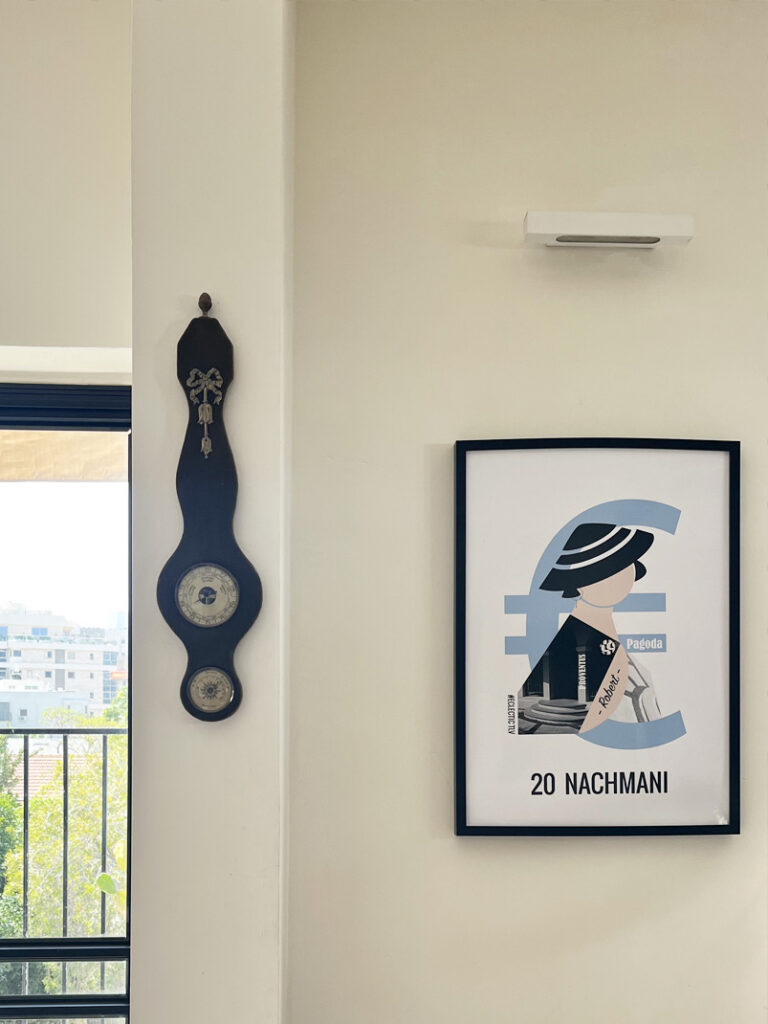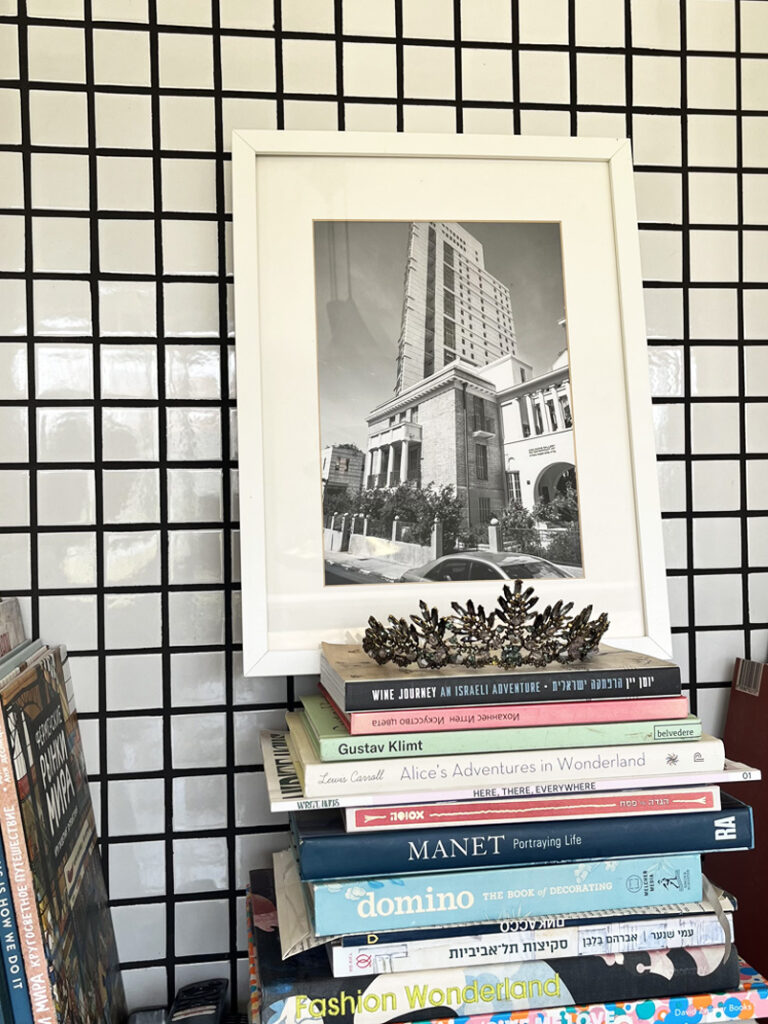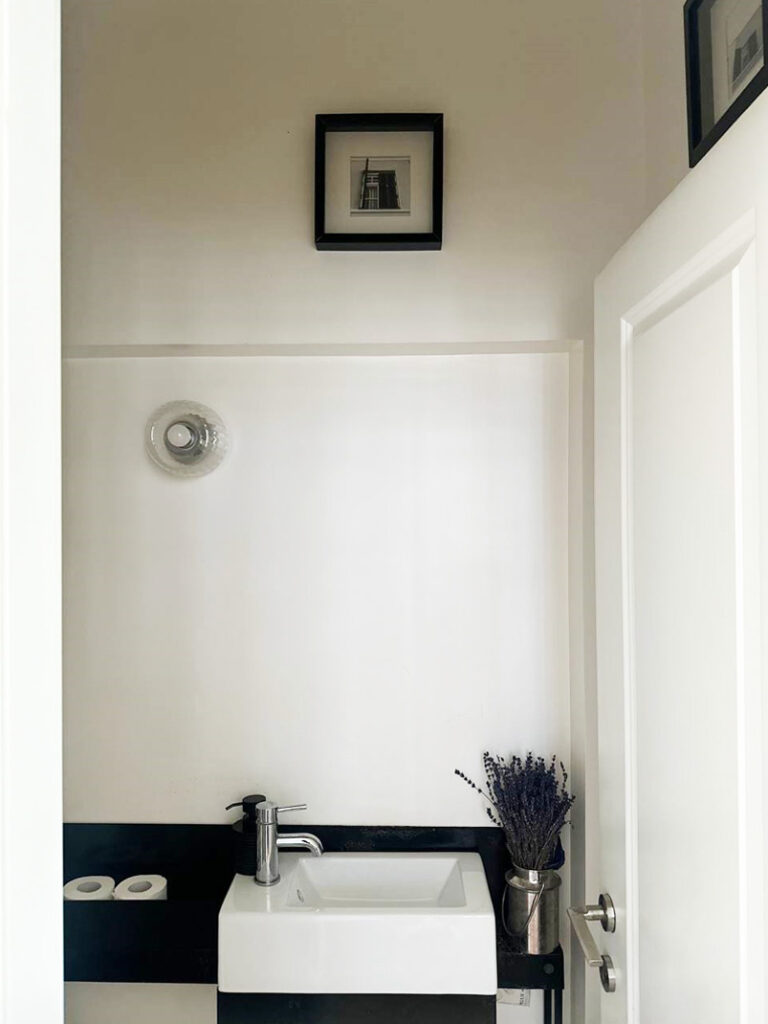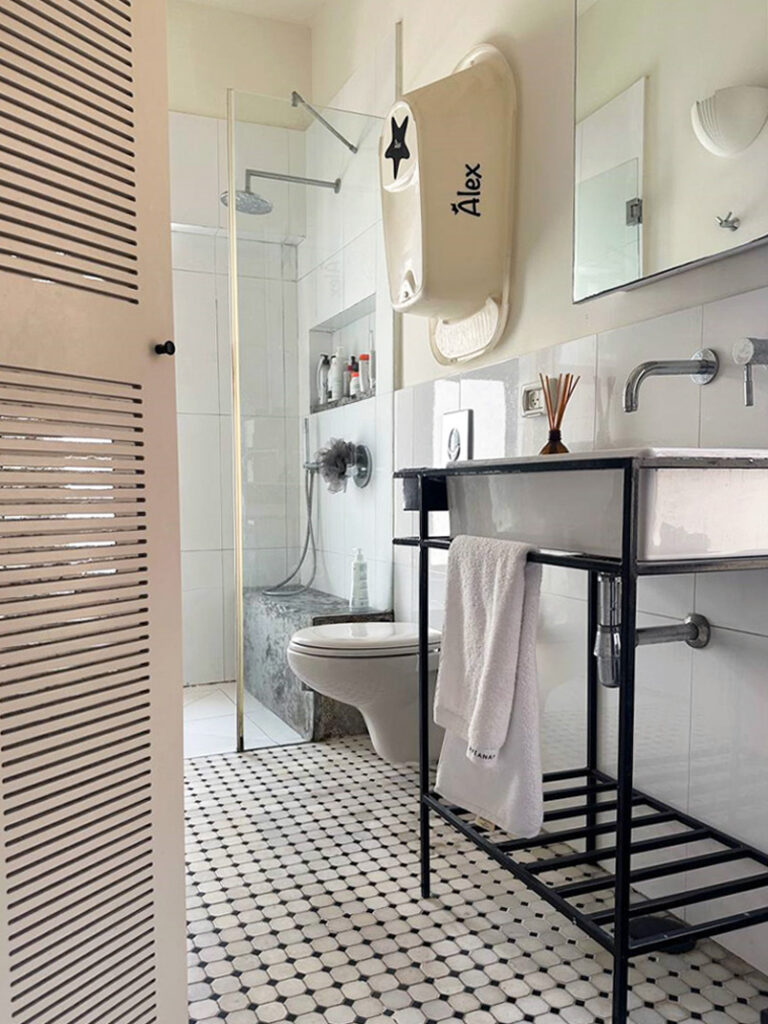At Home With Ela Cohen: Art and Everyday Life
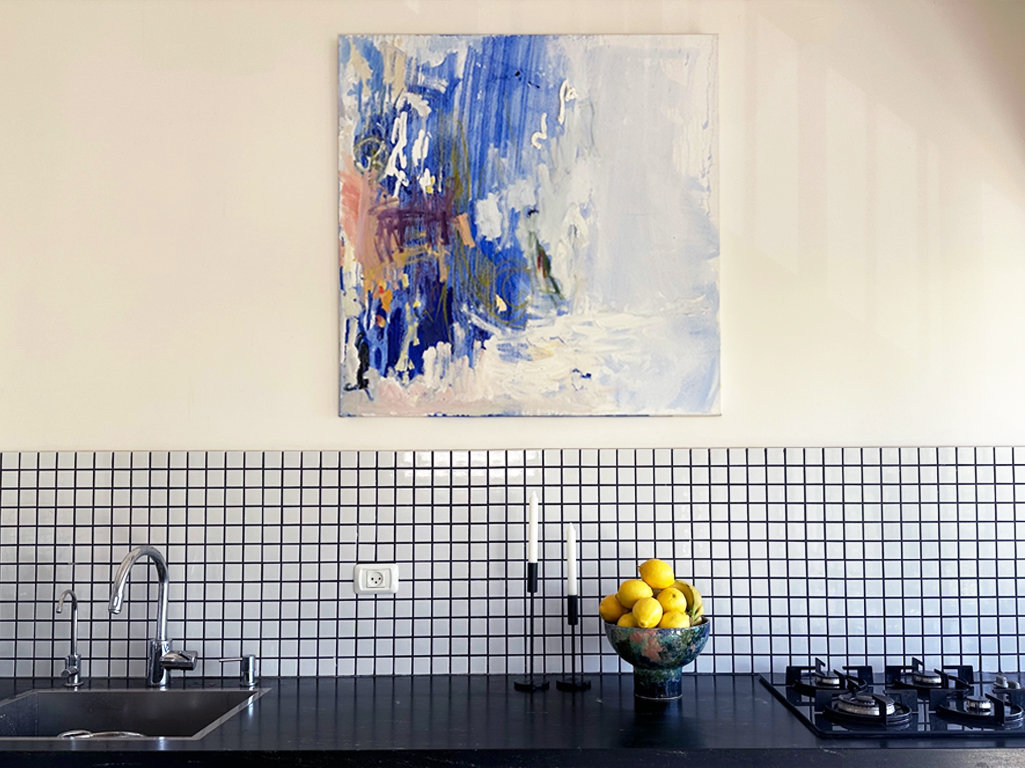
We love visiting people’s homes — observing, getting inspired, and seeing how art and life intertwine in personal spaces. That’s how we came up with our new series “At Home With…” Today, we’re visiting Ela Cohen, founder of the project Eclectictlv.art and an independent art curator. The question is — does art lives in Ela’s home like it does in her professional world?
Ela Cohen
ART curator and founder of “Eclectictlv.art”
Tel Aviv, Israel
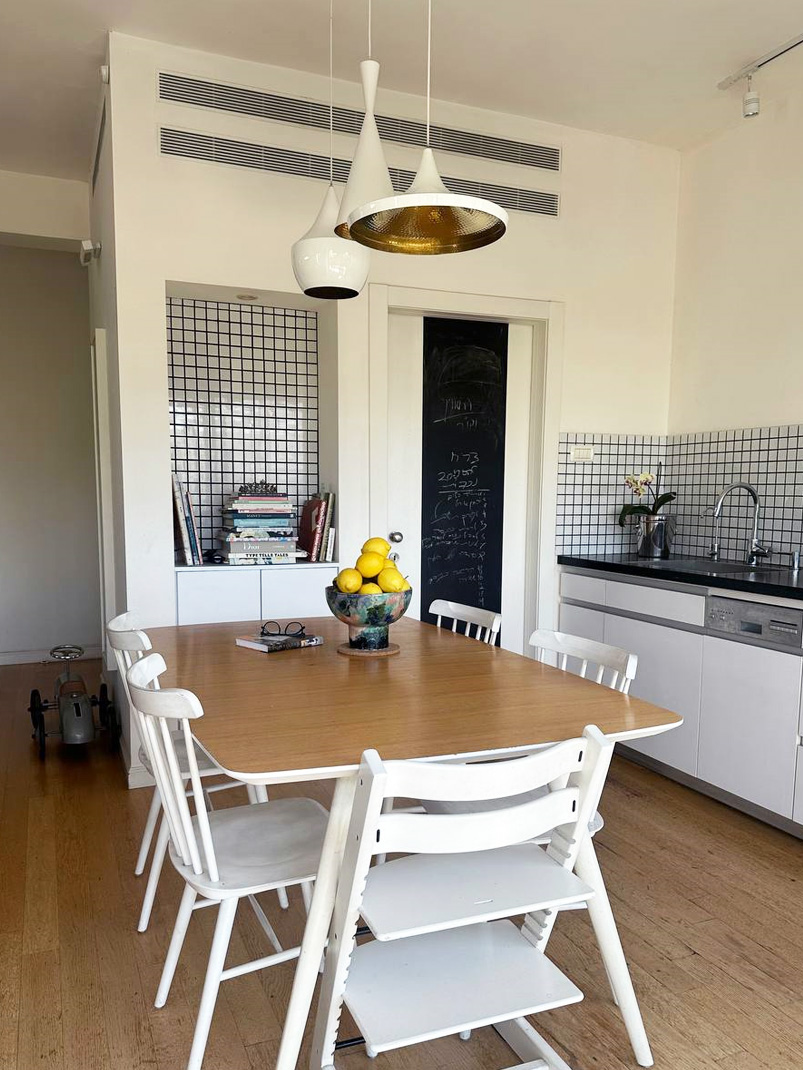
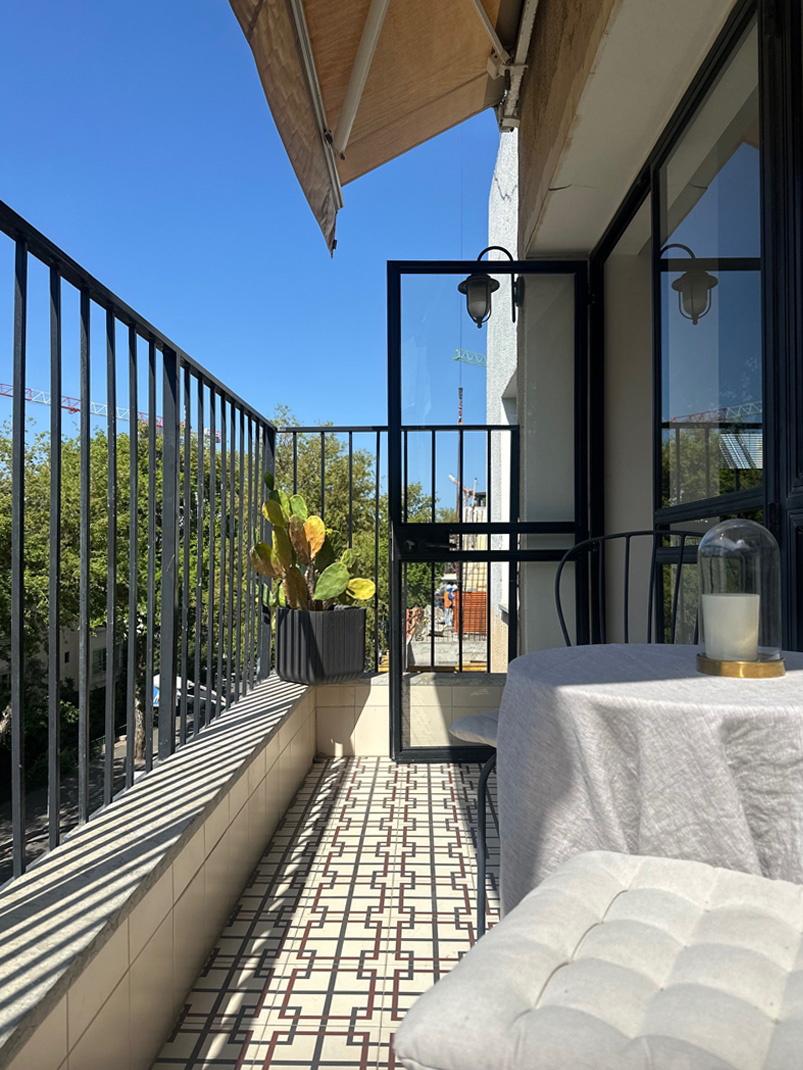
Ela, tell us about your home. What does it mean to you? What are your favorite nooks? What do you most love doing at home?
Our home is filled with art, but it’s not a museum — it’s a warm, living space. It reflects who we are. My favorite moments are when our daughter plays with her friends next to a sculpture, or when friends gather around the dining table and we talk about a new piece hanging on the wall. It’s a space of inspiration, but also of deep comfort and life.
We renovated the apartment 15 years ago. It was one of the first projects of the architect Oren Golan. Even after all these years, I still love my home - it evolves with me and my family and hasn't lost its relevance at all. I adore my kitchen, which opens onto a charming little balcony with a view of the ever-developing Tel Aviv skyline.
Interestingly, there's a painting in our bedroom that my daughter and I created during the COVID lockdown. It's a dynamic piece — a cityscape view from our window that I continue to update regularly. Since there's an ongoing construction in front of our house, the landscape keeps changing, with new buildings and cranes appearing, prompting me to add new elements to the painting.
Your home and art — tell us about your personal collection. How did it start, and how do you choose what enters your home?
It began organically because I wanted to fill my white walls with art. The first piece is a painting that still hangs in my kitchen, created by Ekaterina Belukhina. It brings me joy all this time and serves as the centerpiece of that area in our apartment. Since then, other artworks have joined — sometimes purchased, sometimes exchanged, sometimes gifted. I don’t have strict criteria, but emotional connection is definitely the key. If a work makes me feel something, that’s usually a sign. Another notable piece in our living room is a painting by Ekaterina Belukhina, an artist I curated for a certain period. She moved to London, but the painting reminds me of that great time when we worked together.
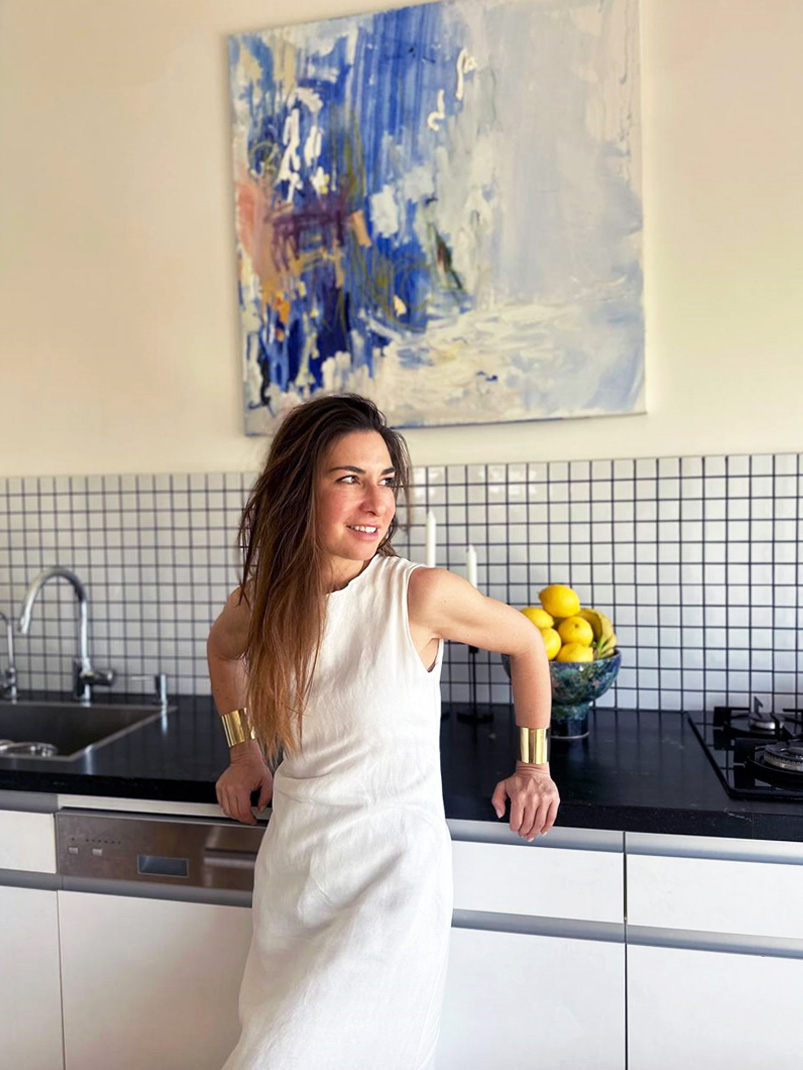
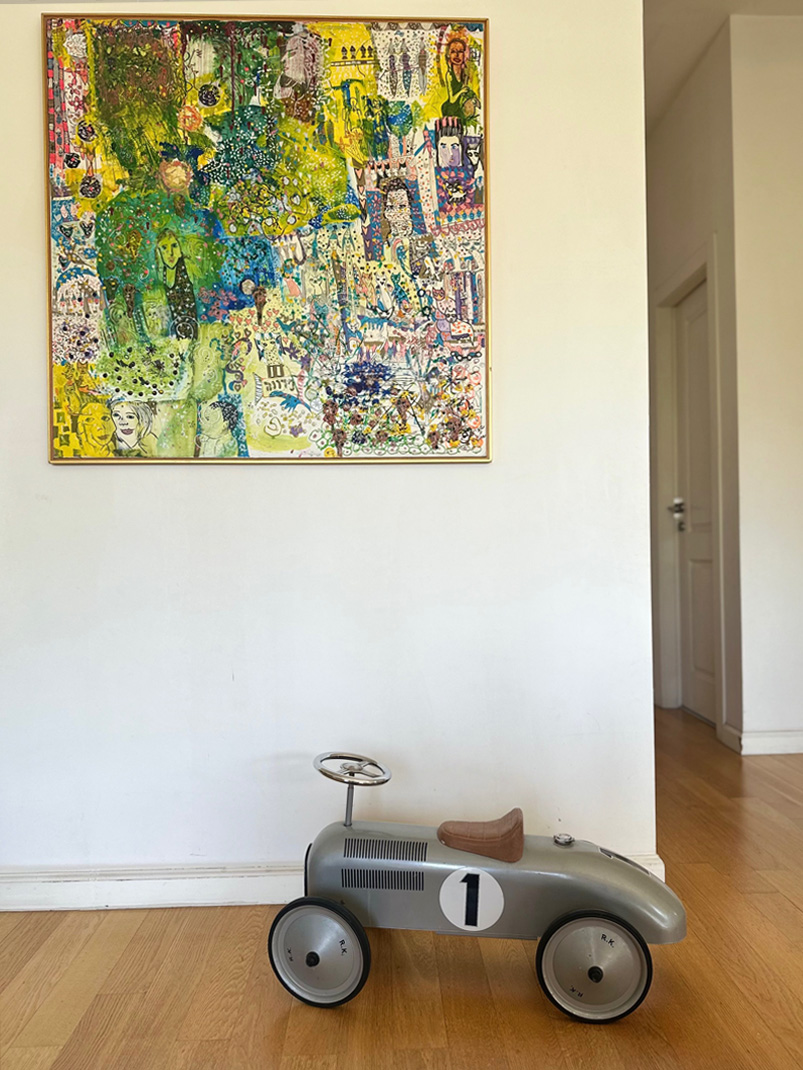
Tell us about your path to art.
I came to art through photography and fashion. When studying art history and fashion design at the University of Haifa and later curating at Bezalel, I worked as a costume assistant in theater. After the graduation, I transitioned into graphic design and branding, a field I am still engaged in, providing services to the Israeli Defense Forces and other clients.
However, after the birth of my daughter, I shifted focus and began creating exhibitions and concepts independently. I started by implementing my own projects — initially photographic collaborations with Liya Geldman, and then expanded to other collaborations with artists. Eventually, this path led me to independent curatorship. Now, I am the curator and founder of the project Eclectictlv.art — a platform designed to foster dialogue between artists and clients, functioning as both an online gallery and a host for regular offline exhibitions.
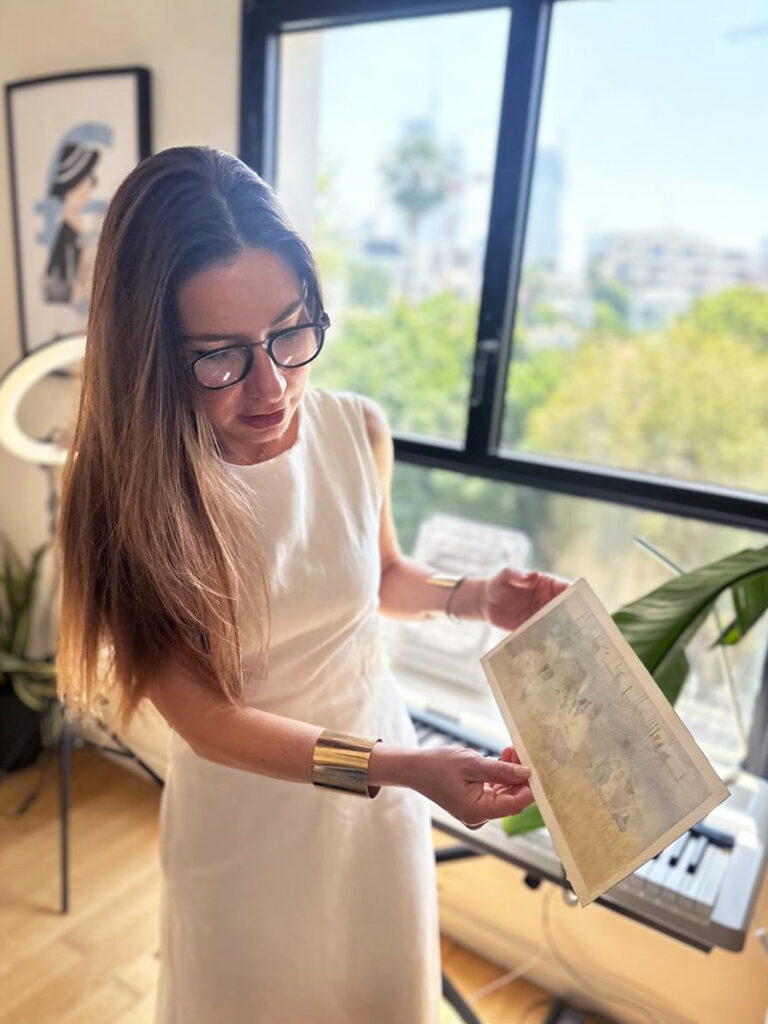
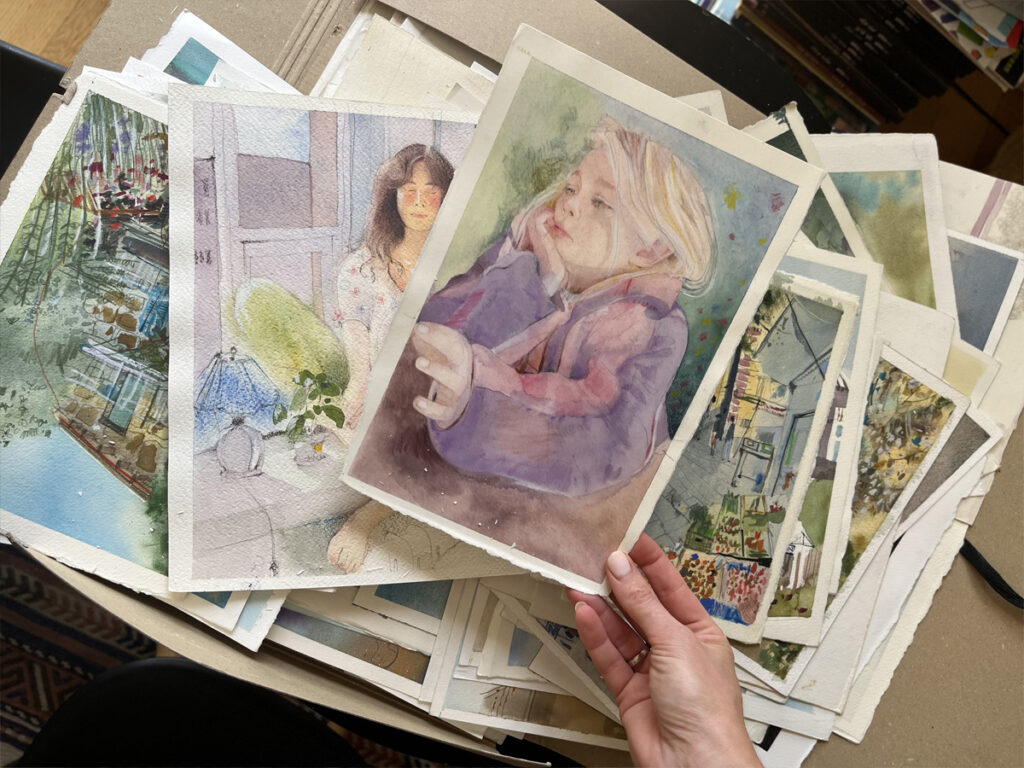
The diversity of your projects is immense. What unites them? What’s your mission? How do you promote and organize them? And what’s the situation now, given the war time?
I curate independently, creating exhibitions both in traditional gallery spaces and unconventional ones — such as private apartments, public buildings, or hybrid spaces. I also work with collectors and offer art consulting services. The unifying mission is to make art accessible without compromising content and integrity. Having made a very hard way to art without any support or advise, my personal goal is to help artists find their way easier and faster. Strategy-wise, I rely on personal connections, a strong network of artists and cultural players, and clear project narratives. In times of crisis like now, the work continues, but sometimes in more intimate or symbolic forms — smaller shows, more local collaborations.
Your participation in Fresh Paint — tell us about that. What’s the project, and what effect does it have on artists?
I’ve participated in Fresh Paint twice — once as an independent curator and once representing our gallery. It’s a powerful platform that gives visibility to artists who may not yet be in established galleries. The exposure and networking opportunities are tremendous. For many, it’s a first serious entry into the professional art world.
In my pavilion, I represent immigrant artists who have recently arrived in Israel and are beginning their journey in our country. The concept of one of our exhibitions was inspired by an artist’s story of leaving their country in 2022 on a train carriage meant for four people but carrying sixteen. I mirrored this by showcasing sixteen artists in our small pavilion. It was a bit cramped but very cozy and filled with impressions! This year, we are preparing a new exhibition for the Fresh Paint art fair, titled “Dialog X Cosmopolitans.” We eagerly anticipate this event.
You as a curator — how do you see your role? What are the challenges and what do you enjoy most?
Being a curator is about dialogue — between the artwork and the viewer, between the space and the idea. Sometimes, it also means being a diplomat and a producer. The challenges include convincing institutions or clients of the value of art, securing budgets, and making space for complex ideas. But when it works — when people stop and engage — it’s incredibly rewarding.
Is there a balance between creativity and making a living? What’s your take on that? What advice would you give creative people who want to start earning from their work in Israel or globally?
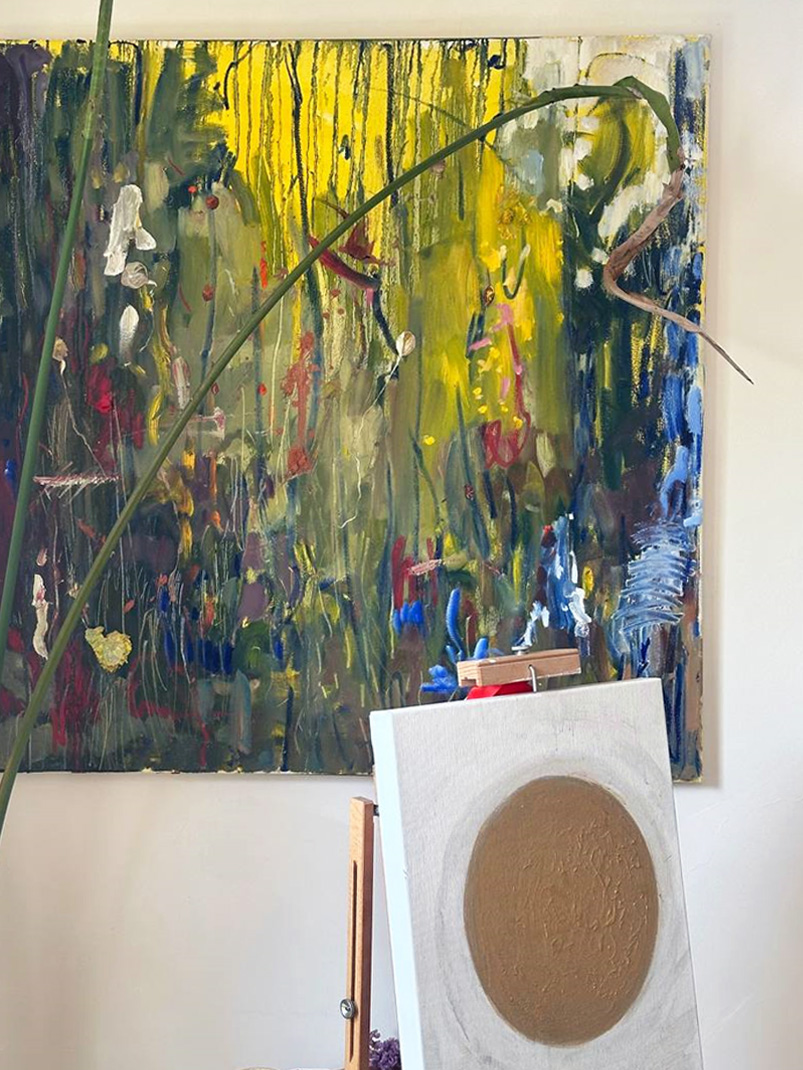
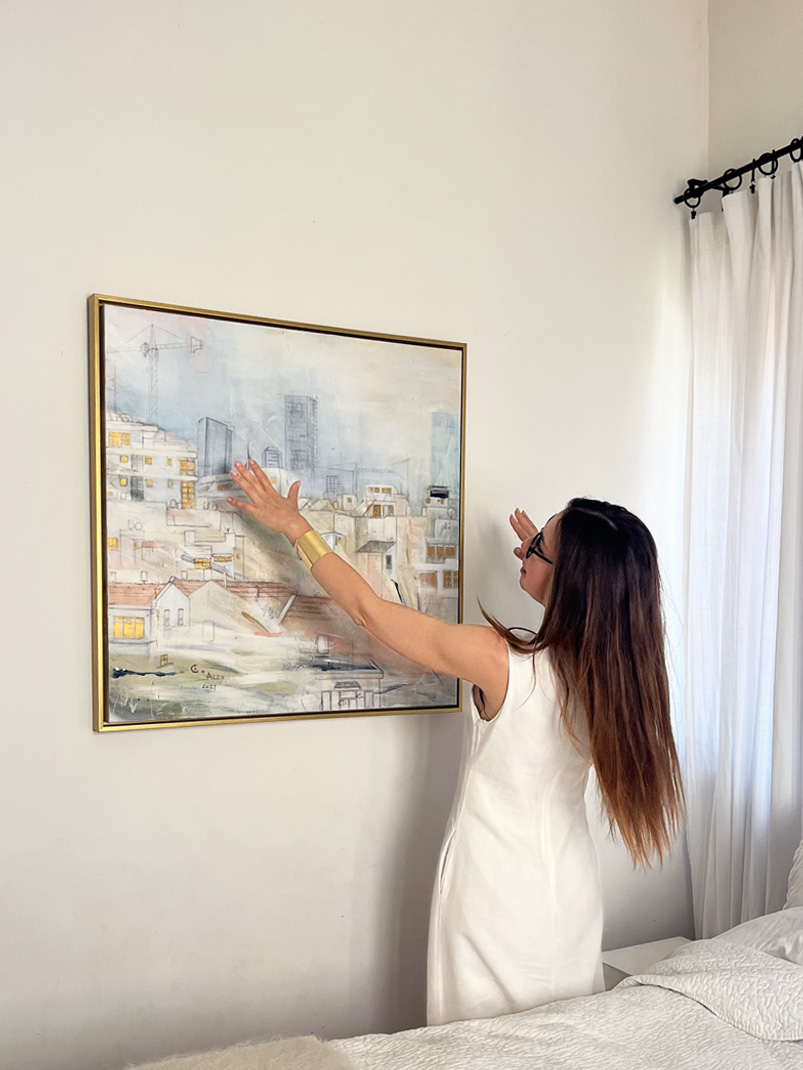
Financially, being a curator alone isn’t always sustainable. I combine it with consulting, writing, and sometimes commercial design collaborations. My advice? Build multiple channels of income related to your field. Network. Be visible. And never lose understanding why you’re creating — it should start from passion, not strategy.
For our readers who want to start collecting — what would you recommend?
I would start with three recommendations:
- Go to graduation exhibitions, art fairs, small galleries. Immerse yourself in the artworks, their compositions, and concepts. Feel what resonates with you, what speaks to your soul.
- Start small. Don’t overthink the investment value — start with what you love. Art should speak to you first.
- Buy from local artists. Support emerging names. They often create the most original works.
The article also features watercolor paintings by artist Nadia Kurbatova, the work by artist Shevi Shechori and a vase by Ekaterina Bermant.
Interview by Nadia Kraginskii and Olga Goldina for DI CATALOGUE
